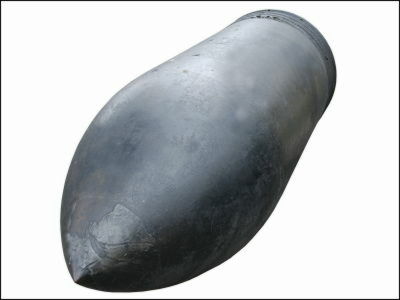How did surgeons try to reduce patient pain before the invention of anesthesia?

In modern times, anesthesia is given so that patients do not feel pain during surgery such as dental treatment and wound suturing, but even before the invention of anesthesia, the profession of a surgeon existed. Tony Wildsmith, Professor Emeritus of Anesthesiology at the
How did doctors perform surgery before modern anesthesia? | Live Science
https://www.livescience.com/surgery-before-anesthesia
In 1811, British novelist Francis Bernie was diagnosed with suspected breast cancer and underwent surgery to remove the breast. The pain was spectacular because modern anesthesia had not yet been developed at the time, and the letter I wrote to my sister said, 'I keep screaming unconsciously throughout the incision. I was surprised that the sound was still in my ears. It was too painful to bear. ' While Bernie's account tells how painful surgery was before the development of anesthesia, doctors have long come up with different ways to calm and relieve patients.
For example, in the 12th century, there are records of doctors applying opium and mandrake juice -soaked sponges to patients to induce drowsiness and dull pain before surgery. In addition, the recipe for an anesthetic called 'Dwale' written from the Roman period to the Middle Ages states that boar bile, opium, mandrake juice, poison hemlock, vinegar, etc. are used as raw materials. And since the 17th century, opium and laudanum have been used as anesthesia.
However, these medicines seemed to be rough and inaccurate, making it difficult to adjust to the needs of the patient. Poison hemlock is also the poison used in the execution of Socrates, which is addictive to opium and laudanum, and high volumes of mandrake juice can cause hallucinations, heart rate abnormalities and, in the worst case, death. .. In this way, the initial anesthesia was side by side with danger.

The wise solution chosen by doctors against the background of inadequate development of anesthesia technology was to 'perform surgery that is burdensome to the patient as quickly and accurately as possible.' 'Surgery was short, going back 150 years,' Wildsmith said, and the efficiency and accuracy of surgery was a measure of a surgeon's skill.
Severely painful and risky surgery, such as caesarean section or site amputation, was uncommon until the mid-1800s, as complicated surgery cannot be done in a short amount of time. On the other hand, surgery such as tooth extraction, which is relatively painful and less dangerous, was more common, but it goes without saying that these patients also wanted to avoid tooth extraction pain as much as possible, so patients took their teeth. He said he didn't line up to get him pulled out. 'Let's take the position of the person at the time. You had a doctor's surgery because you felt pain, but the pain gets worse,' Wildsmith said.
As doctors explored various methods, unusual anesthesia methods using non-medicines were also devised. One of these is 'compression,' which involves applying pressure to the carotid arteries to faint, or to compress nerves to numb parts of the body and reduce the sensation of pain. According to Wildsmith, the word 'carotids', named by an ancient Greek doctor, includes the meanings of 'syncope' and 'disappearance', which has been squeezing the carotid arteries since then. Then it was known to faint. However, this method was not widely used because it would kill the patient if one step was wrong.
On the other hand, regarding nerve compression, it has been

One of the stranger anesthesia methods is the use of the '
In Mesmerism, it is believed that the therapist's 'magnetism' can be used to treat the disease, which can be used to make the patient unaware of the pain. In fact, mesmerism anesthesia was widespread in Europe and India by the mid-19th century, and surgeons are said to have been able to perform surgery before the patient felt pain.
However, scientists have voiced that mesmerism is a pseudoscience, and at the same time, mesmerism has declined due to the rise of scientific anesthesia methods. By the mid-19th century, scientists focused on anesthesia using an organic compound called diethyl ether , which was obtained by distilling sulfuric acid with ethanol, and in 1846, an American surgeon named William Morton used ether gas. Succeeded in removing the tumor in the neck painlessly. Chloroform was also discovered in 1848 to relieve childbirth and other pain, allowing surgeons to perform more complex and time-consuming surgery on patients. In Japan, there is a record that Hanaoka Seishu , a surgeon of the Kishu domain, succeeded in surgery using general anesthesia in 1804.
At the time of writing the article, neither ether nor chloroform was used for anesthesia, but it is said that these two drugs led to the development of the drug that is widely used today.

Related Posts:
in Science, Posted by log1h_ik







